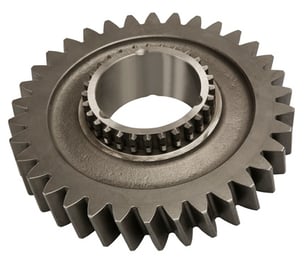 Steel is critical to our modern world, with companies producing more than 1.6 billion tons every year[i]. When it comes to high-carbon steel, the higher the carbon content, the harder and stronger the steel is. As carbon is reduced, the iron becomes more flexible and easier to form. Carbon steel makes up more than 85% of the steel produced in the United States, and while other alloys can be used to change steel properties, such as Manganese and Vanadium, carbon is the most cost-effective alloying material for iron.
Steel is critical to our modern world, with companies producing more than 1.6 billion tons every year[i]. When it comes to high-carbon steel, the higher the carbon content, the harder and stronger the steel is. As carbon is reduced, the iron becomes more flexible and easier to form. Carbon steel makes up more than 85% of the steel produced in the United States, and while other alloys can be used to change steel properties, such as Manganese and Vanadium, carbon is the most cost-effective alloying material for iron.
“Steel has a carbon content ranging from .2 to 1.5 percent, enough carbon to make it harder than wrought iron, but not so much as to make it as brittle as cast iron. Its hardness combined with its flexibility and tensile strength make steel far more useful than either type of iron: it is more durable and holds a sharp edge better than the softer wrought iron, but it resists shock and tension better than the more brittle cast iron.”[ii]
The American Iron and Steel Institute considers steel to be carbon steel when[iii]:
- No minimum content is specified or required for chromium, cobalt, columbium [niobium], molybdenum, nickel, titanium, tungsten, vanadium or zirconium, or any other element to be added to obtain a desired alloying effect;
- When the specified minimum for copper does not exceed 0.40 per cent; or
- When the maximum content specified for any of the following elements does not exceed the percentages noted: manganese 1.65, silicon 0.60, copper 0.60.
Iron with ultra-high carbon content (1.25-2.0%) is used for items such as metal cutting tools and truck springs, while low carbon content (< .30%) is used to make auto body panels and wire products.
The analysis of steel for alloying elements is an important quality control measure. Earlier this year, Leeman Labs completed a test to determine if the company’s Prodigy 7 High Dispersion ICP is an effective tool for measuring levels of alloying elements in steel samples.
The Prodigy7 is a compact bench-top simultaneous ICP-OES system featuring a 500 mm focal length Echelle optical system coupled with a mega-pixel large format CMOS detector. At 28 x 28 mm, the active area of the L-CMOS is significantly larger than any other solid-state detector currently used for ICP-OES. This combination allows the Prodigy7 to achieve higher optical resolution than other solid-state detector-based ICP systems.
A high-carbon steel (0.87% C) reference material, SRM 364 (NIST), was used in this study. For the sample preparation, approximately 1 gram of the material was placed in a Teflon® beaker, covered with a minimum of deionized water (DIW) and placed on a hot plate. The samples were dissolved using 5 mL of nitric acid (HNO3) and 1 mL hydrofluoric acid (HF) while gently heating. Once the dissolution was complete, the samples were diluted to 100 mL with DIW.
Teledyne Leeman Lab’s Radial View Prodigy7 High Dispersion ICP successfully identified 18 elements in the steel sample by carefully matrix matching the base iron concentration of the samples to the calibration standards.
For more details about the analysis process and findings, including the instrument calibration standards, operating conditions, and wavelength parameters.

[i] https://www.worldsteel.org/publications/position-papers/Steel-s-contribution-to-a-low-carbon-future.html
[ii] http://www.anselm.edu/homepage/dbanach/h-carnegie-steel.htm
[iii] http://www.totalmateria.com/articles/Art62.htm
